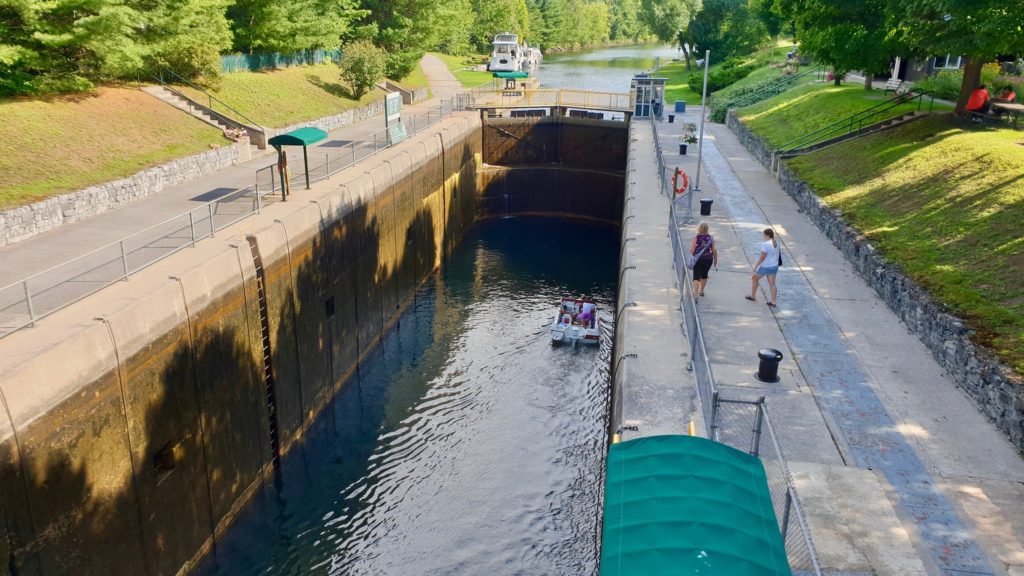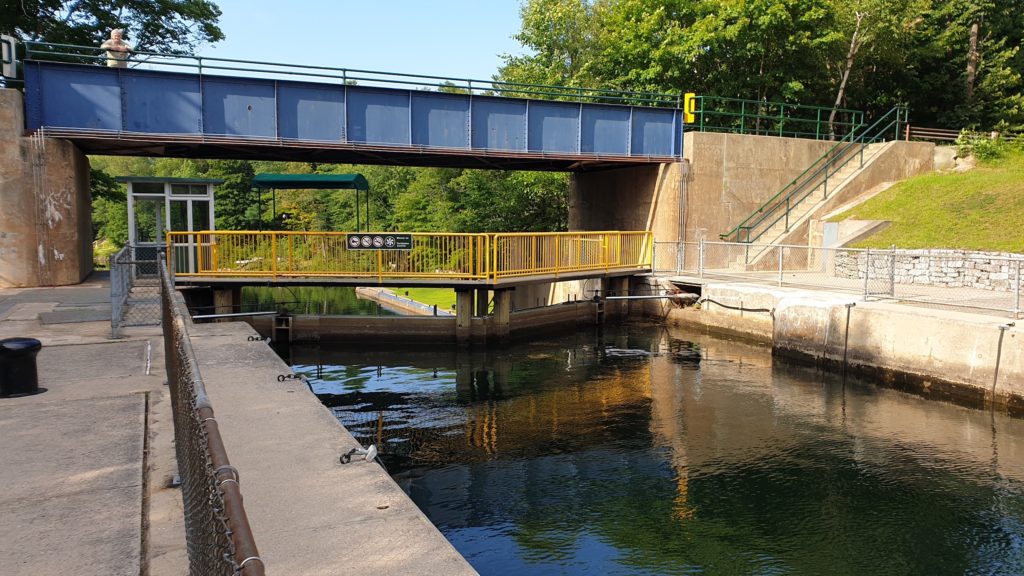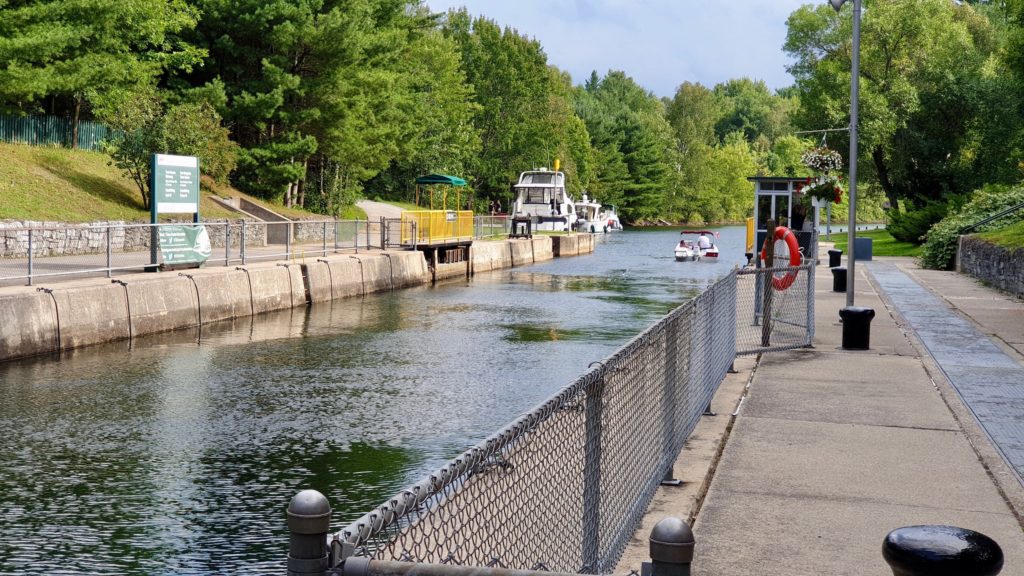The Trent-Severn Waterway runs for 386 km across southern Ontario. It connecs the Bay of Quinte in Lake Ontario with Georgian Bay in Lake Huron. Parks Canada operates the waterway that runs through the heart of Ontario’s “cottage country”, making it a very popular stop for cruisers. Indeed, we saw boats from Québec, British Columbia, Michigan, and Washington State.
One of the last stops along the waterway as you head west towards Lake Huron is the Big Chute Marine Railway (Le Ber Roulant de Big Chute in French). The railway sits near the town of Muskoka, about 15 km west of Gravenhurst, Ontario. It is open to boat traffic from May to October.
What is the Big Chute Marine Railway?
What makes Big Chute so unique is that there is a marine railway instead of a lock. Because of an unusual land barrier between the two bodies of water, building a lock was impractical, if not impossible. The marine railway was much more cost-effective and efficient to both build and operate. The railway covers a distance of 228 meters, with an elevation change of about 20 meters.
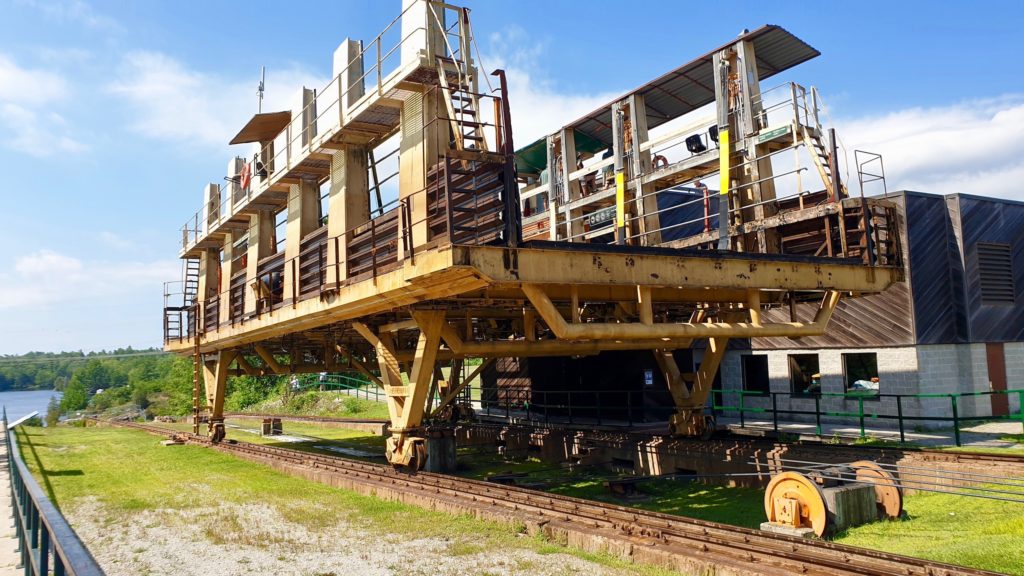
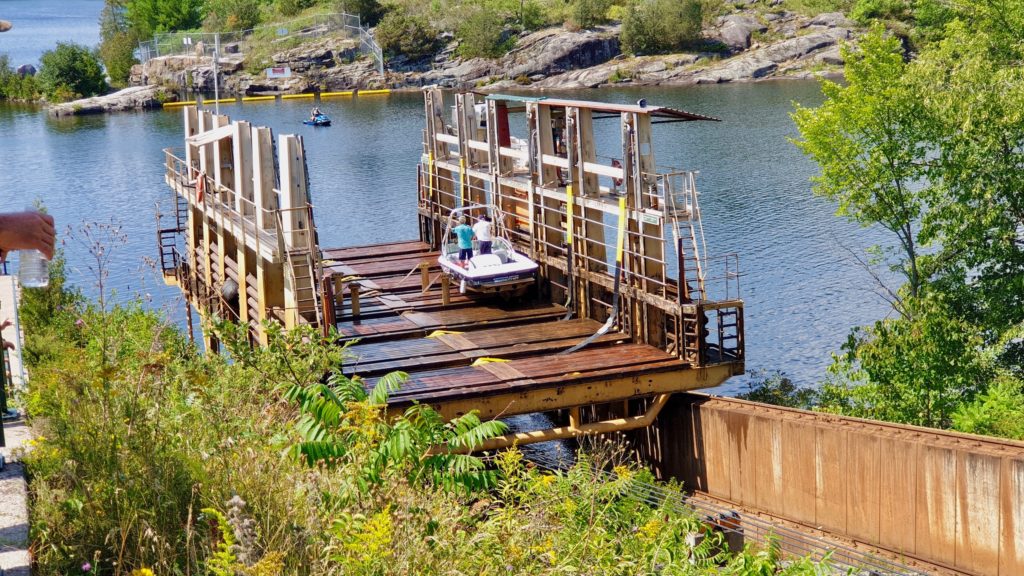
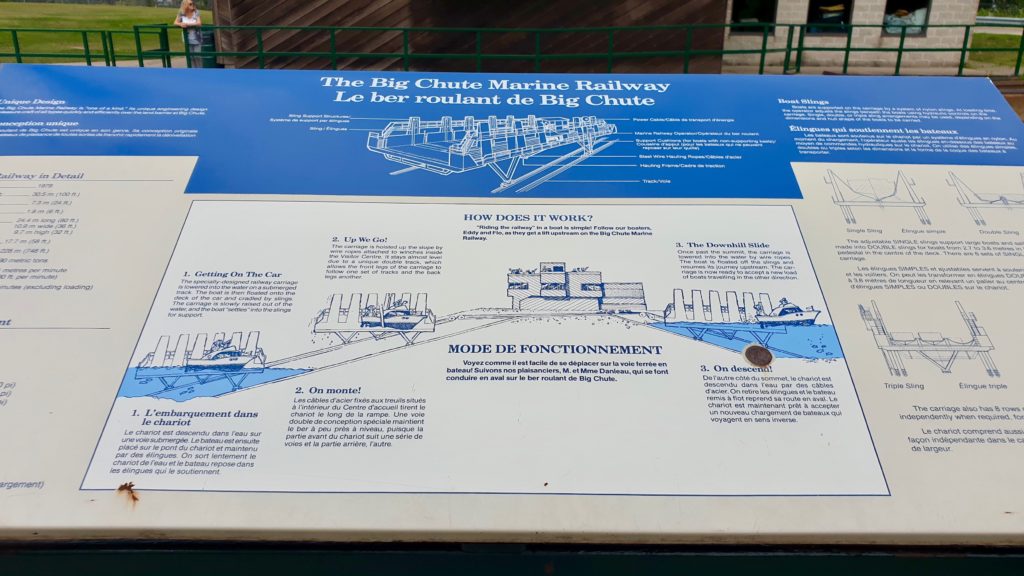
As fascinating as it was to sit and watch the railway, my uncle and I actually came to Big Chute to go paddling. We loaded up the canoe and set off down the river. We weren’t sure how far down the river we could get, so we decided to go until either we couldn’t go any further or we got tired. At that point, we would stop for a picnic lunch.
The first obstacle we got to was a large dam, so we had to beach the canoe and carry it the short distance around the dam. On the other side of the dam, it became really tranquil and peaceful. We were away from the crowds and it really was just us, the river, and nature.
We Didn’t Make It Far
A short while later we got to our first set of rapids. We beached the canoe and climbed up on the bank to scout the rapids. My uncle and I spent a few minutes contemplating a plan. We were confident we could get safely through the rapids. However, neither of us were all that excited at the prospect of having to carry the canoe around the rapids on the way back. This would be where we would have lunch.
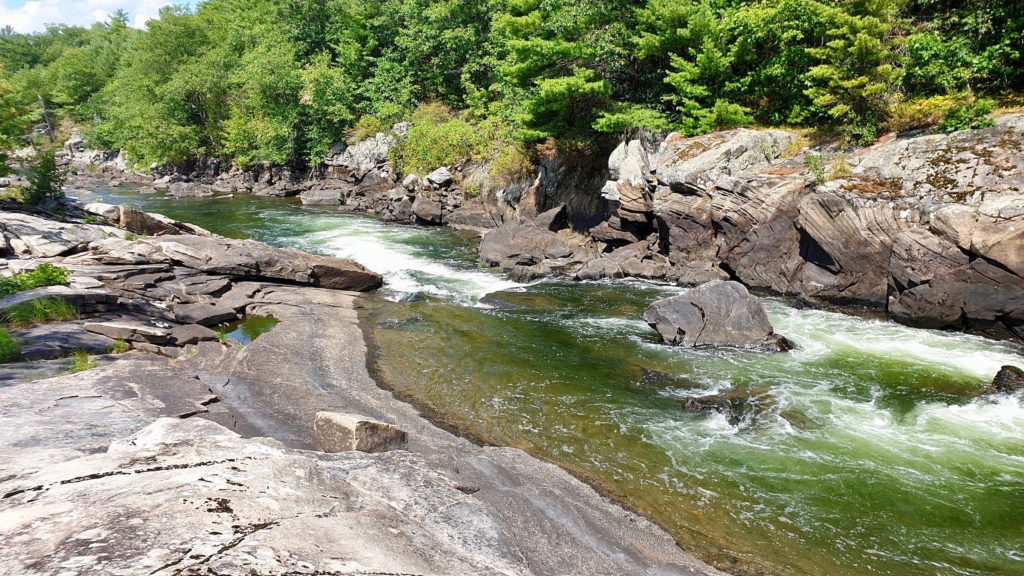
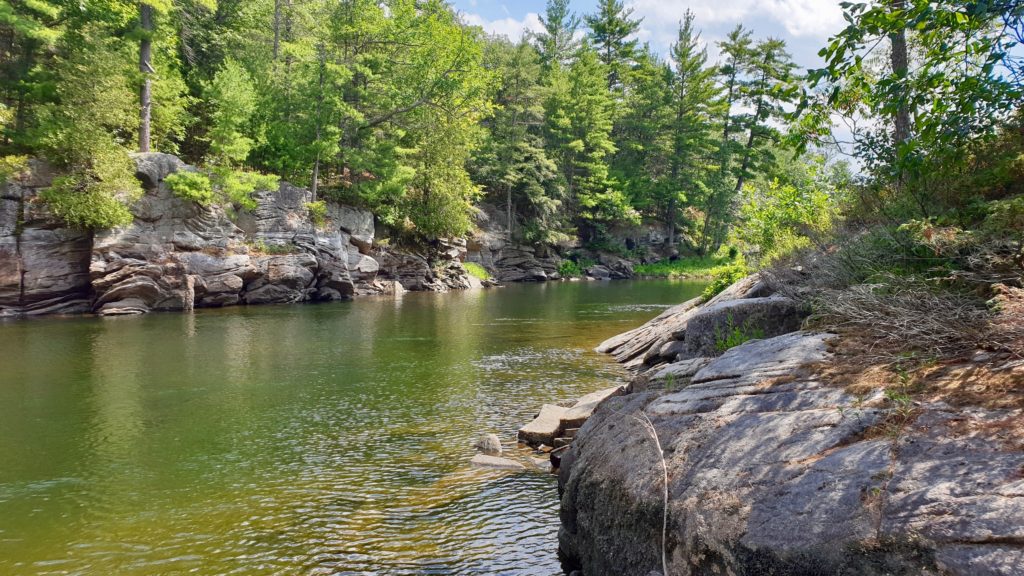
A Moment for Reflection
Being able to sit on the banks of the river also gave me the first opportunity to reflect on the trip so far. Less than 2 weeks ago, I was sitting on the beach in Mexico at the beginning of the trip. That felt like it was about 2 years ago. A week ago, I was driving across the west Texas prairie on my way to Norman, Oklahoma. Again, that seemed more of a distant memory now rather than something that had just happened. I had left Norman just 4 days earlier. Funny how criss-crossing your way across three different countries will do that.
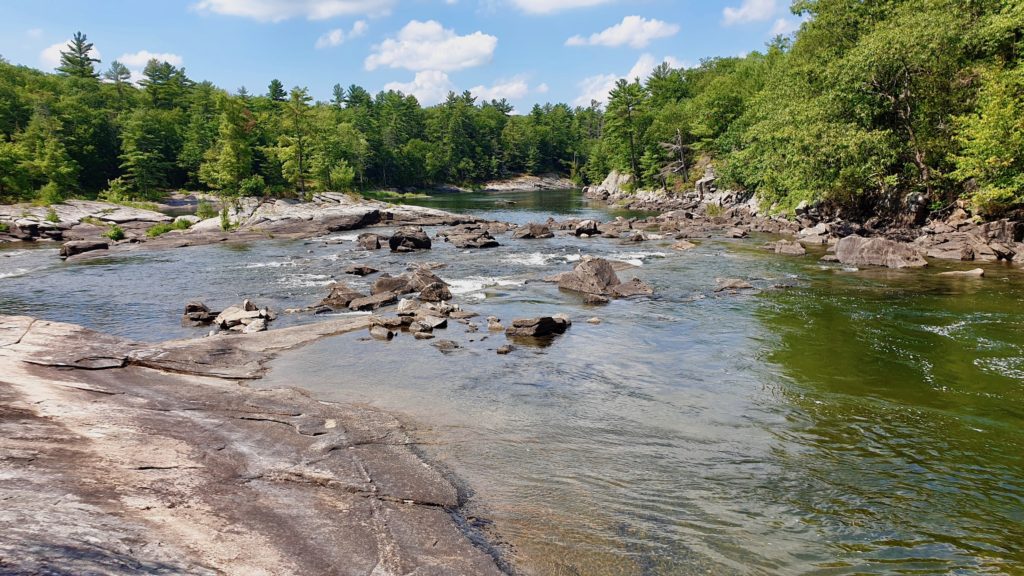
As great as the trip has been so far, it’s also important to keep looking forward to what’s ahead. It’s hard to believe I will be leaving my uncle’s tomorrow morning for the final leg of the trip exploring Québec. After that, I’m heading to the trip’s final destination at my parent’s house in Massachusetts.
It seemed like a blink of an eye once we started paddling that we were back at the boat launch at Big Chute. It turns out we had only paddled a little over a kilometer downstream. We really didn’t make it that far before we stopped. I snapped a few last pictures of the marine railway. We loaded up the car and headed back to Washago.
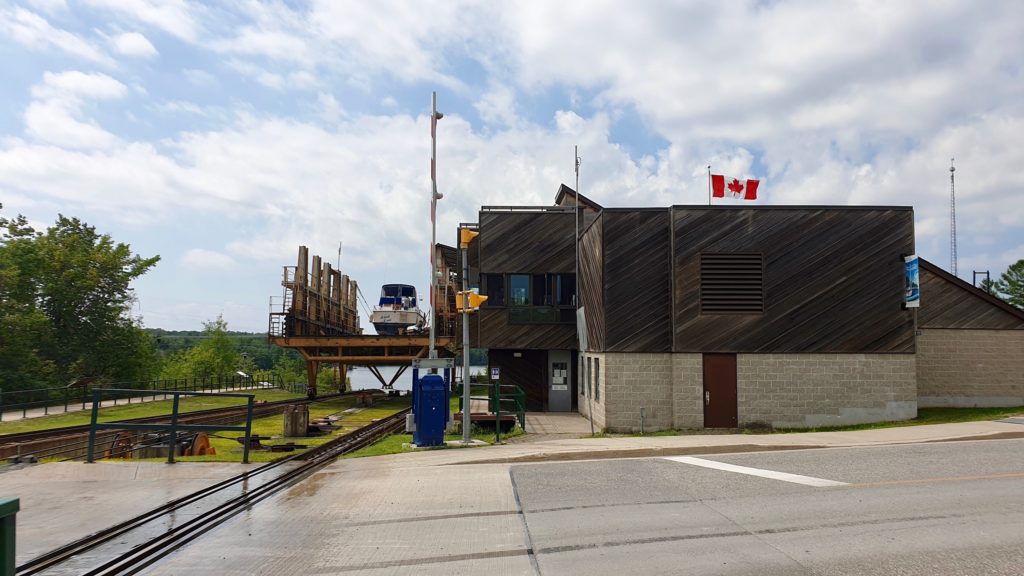
A Final Stop on the Trent-Severn Waterway
On the way home, to see a comparison, we stopped at the Couchiching Lock (L’écluse Couchiching in French), which is also part of the Trent-Severn Waterway. After seeing the lock, it became quite obvious why the Big Chute Marine Railway was built instead of a lock. That’s it for now. Enjoy the photos. À demain au Québec!
